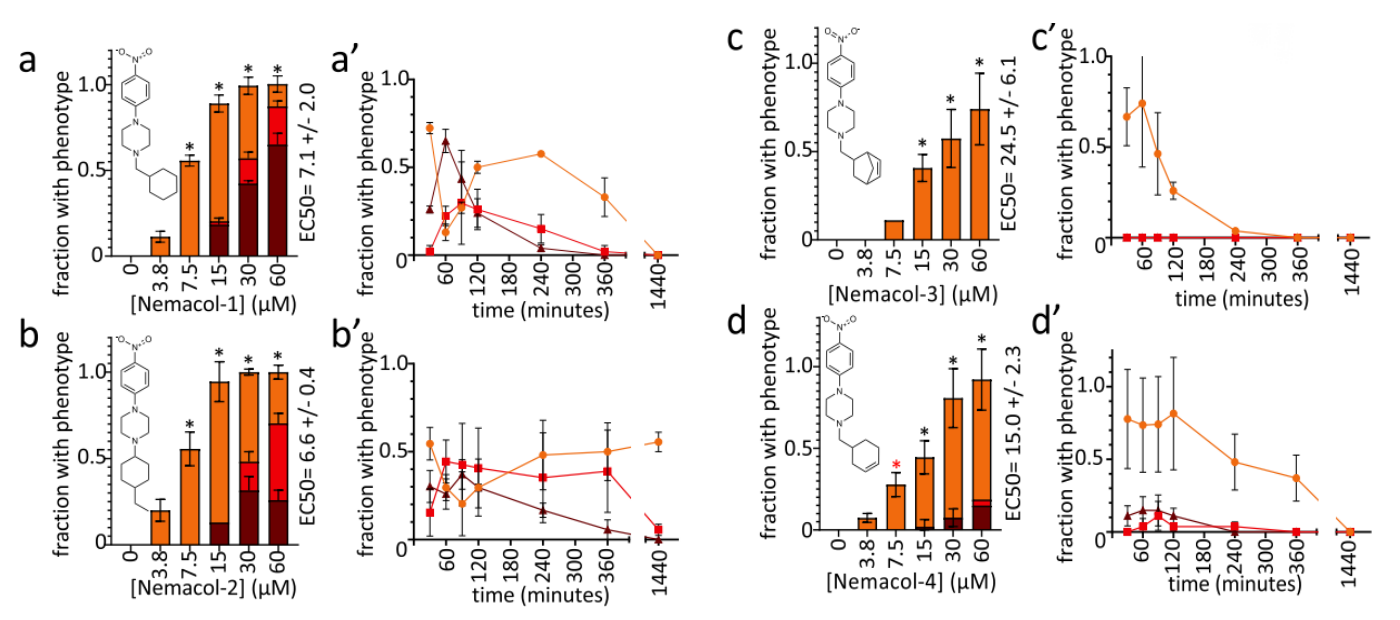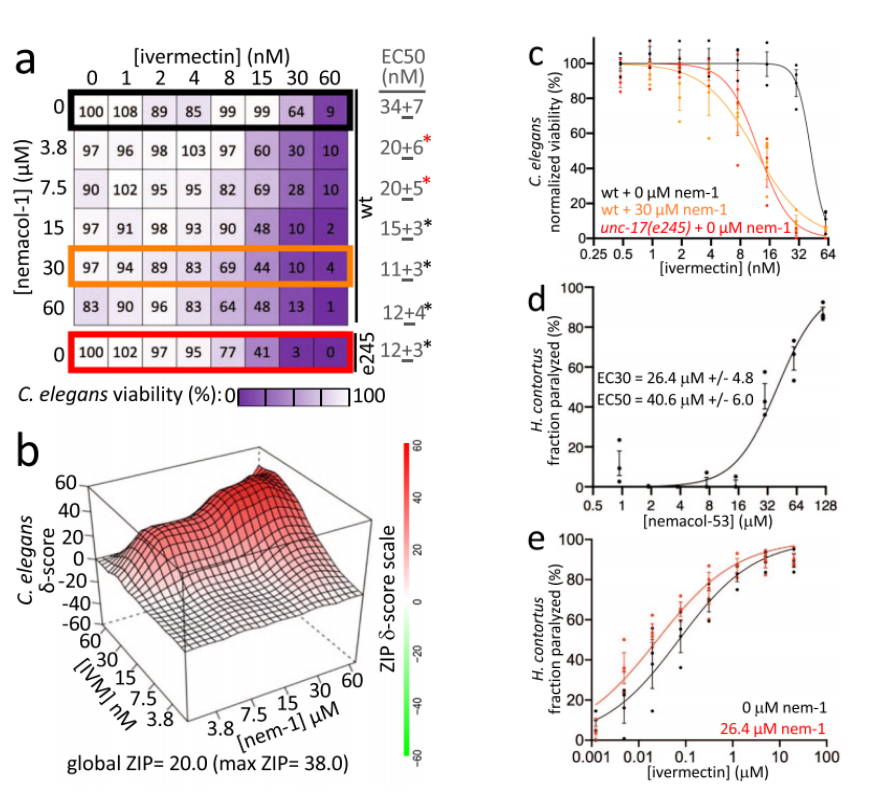Parasitic worms, commonly referred to as helminths, persist as a substantial menace to both human and animal health globally. Effective treatment relies on anthelmintic drugs, but the emergence of anthelmintic resistance necessitates the development of novel therapeutic strategies. This blog post dives into a recent study published in Nature Communications that explores the potential of Nemacol, a small molecule inhibitor, as a new weapon against these harmful parasites.
Nemacol's Target: The Achilles' Heel of Worm Neuromuscular Function. The study by Harrington et al. investigates Nemacol's mechanism of action, focusing on the vesicular acetylcholine transporter (VAChT) within the worm's nervous system. VAChT plays a critical role in packaging the neurotransmitter acetylcholine into synaptic vesicles, essential for proper nerve signaling. By inhibiting VAChT, Nemacol disrupts the cholinergic nervous system, leading to impaired muscle function in the worm. The article highlights the results of a viability assay using the nematode Caenorhabditis elegans as a model organism. Nemacol exposure caused rapid motor defects in C. elegans, with significant paralysis observed within a short time frame. This phenomenon shows a clear concentration-dependent response, where increasing concentrations of Nemacol led to a greater percentage of paralyzed worms (Figure 1).

Figure 1. Increasing concentrations of Nemacol, all 4 tested substructures, led to a greater percentage of paralyzed nematodes.
Species Selectivity and Overcoming Resistance Concerns. A critical aspect of Nemacol's potential lies in its apparent species selectivity. The authors addressed concerns about potential side effects in mammals by developing Nemacol analogs with reduced affinity for the mammalian VAChT compared to the worm VAChT. This suggests the possibility of tailoring Nemacol for improved safety in future therapeutic applications. The emergence of anthelmintic resistance is a growing concern, rendering existing medications ineffective against certain parasite strains. The ability of Nemacol to target a distinct mechanism compared to many current anthelmintics offers a significant advantage. This alternative approach could prove valuable in combating resistant worm infections.
Synergy with Existing Deworming Medications. The study explores the potential for combining Nemacol with Ivermectin, a widely used deworming medication. The results indicate a synergistic effect, with Nemacol significantly enhancing Ivermectin's efficacy against C. elegans and Haemonchus contortus, a parasitic nematode infecting livestock (Figure 2).

Figure 2. Nemacol-1 synergistically kills C. elegans in combination with Ivermectin.
Future Directions and Broader Implications. The study by Harrington et al. lays the groundwork for further exploration of Nemacol's potential as a novel anthelmintic. However, the mechanism behind Nemacol still needs to be further studied:
1. In vivo efficacy: Although the present study showcases Nemacol's efficacy in worm models, subsequent research endeavors necessitate evaluation in animal models harboring naturally occurring parasitic worm infections.
2. Mechanism of action in different species: A deeper understanding of how Nemacol disrupts VAChT function and neuromuscular signaling across various parasitic worm species is necessary.
3. Pharmacokinetic and toxicological studies: Extensive pharmacokinetic and toxicological studies are required to assess Nemacol's safety, absorption, distribution, metabolism, and excretion within potential host organisms.
4. Development of drug candidates: Based on the study's findings, further optimization of Nemacol's structure is likely to be undertaken to improve potency, selectivity, and pharmacokinetic properties for drug development.
Nemacol's emergence as a potential new anthelmintic offers a beacon of hope in the fight against parasitic worm infections. Its targeted approach towards the worm's VAChT, along with its apparent species selectivity and potential for combination therapy, holds significant promise for addressing the growing challenge of anthelmintic resistance. Further research is necessary to translate this potential into effective clinical applications, but the initial findings presented in this study pave the way for the development of novel therapeutic strategies to combat these persistent and debilitating parasitic diseases.
References
Harrington, S., Pyche, J., Burns, A.R. et al. Nemacol is a small molecule inhibitor of C. elegans vesicular acetylcholine transporter with anthelmintic potential. Nat Commun 14, 1816 (2023). https://doi.org/10.1038/s41467-023-37452-6